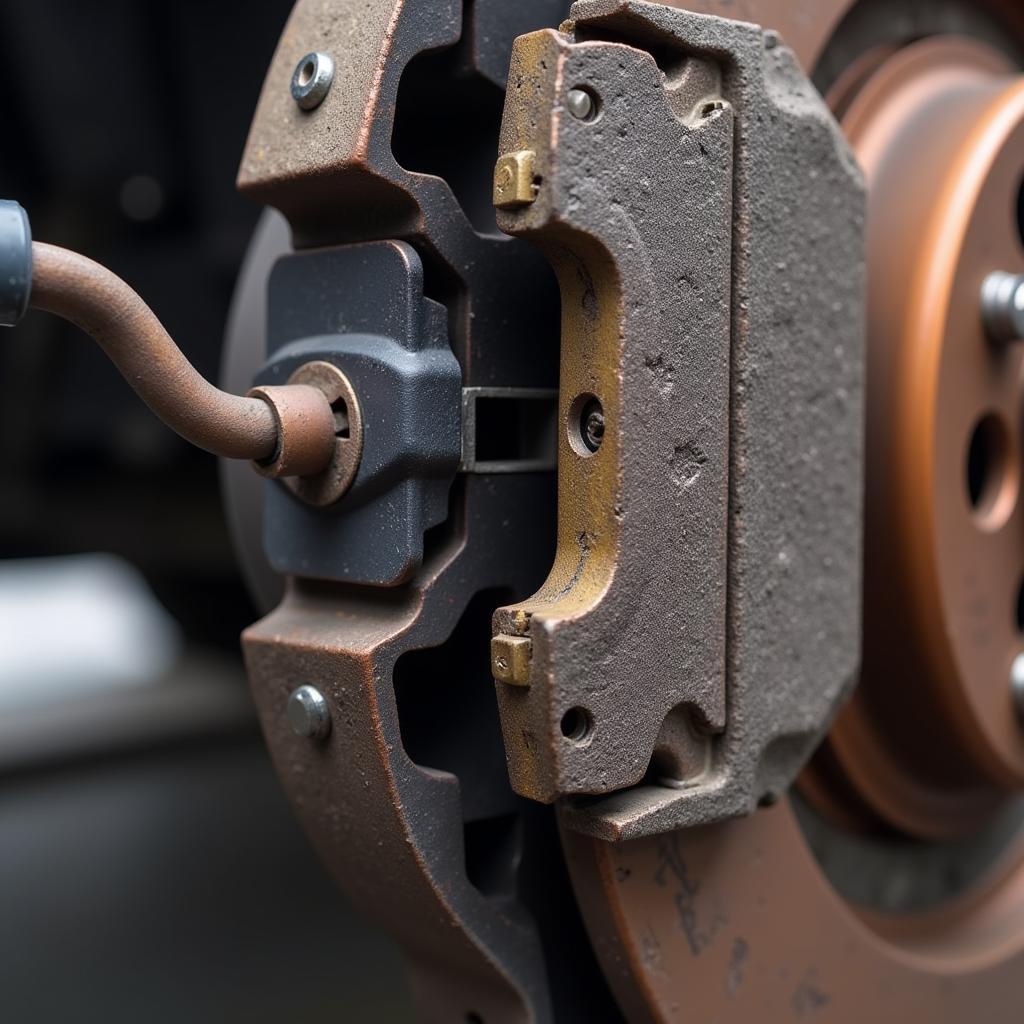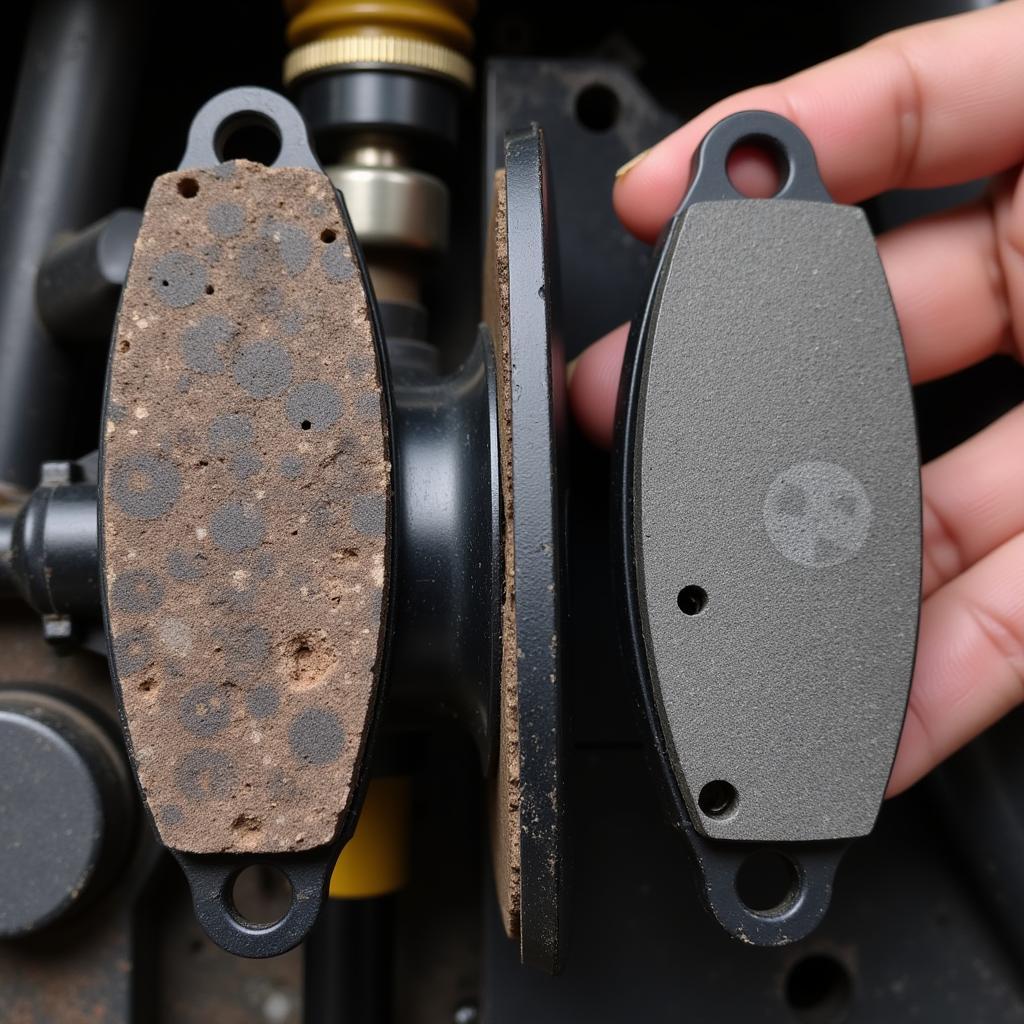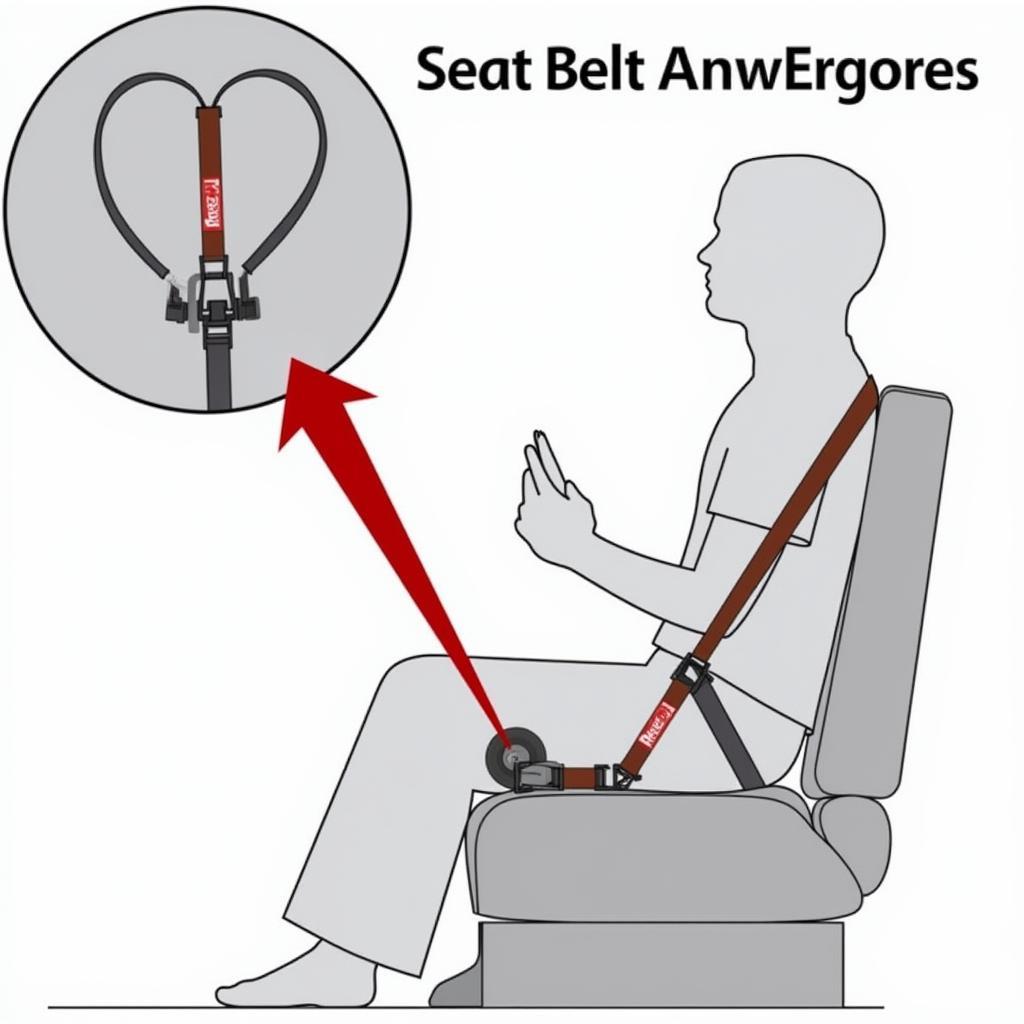The dreaded brake lining warning light has illuminated your dashboard, and a sense of dread washes over you. What does it mean? Is it safe to drive? How much will it cost to fix? As an expert in automotive electrical engineering specializing in remote diagnostics, programming, and software installation for car repairs, I’m here to guide you through this common automotive headache.
This warning light, often accompanied by an annoying chime, signifies a problem with your vehicle’s braking system. While it could be something as simple as worn brake pads, it’s crucial not to ignore this warning as it could compromise your safety and that of others on the road.
Understanding Your Vehicle’s Braking System
Before we delve into the reasons behind the brake lining warning light, it’s helpful to understand the basic components of your car’s braking system:
- Brake Pads: These are crucial components that make contact with the brake rotors to slow down or stop your vehicle.
- Brake Rotors (Discs): These metal discs are attached to the wheels and provide a surface for the brake pads to clamp down on.
- Brake Calipers: These hydraulic components house the brake pads and exert pressure on them to engage the brakes.
- Brake Fluid: This specialized fluid transmits the hydraulic pressure from the brake pedal to the calipers, activating the braking system.
- Brake Lines: These metal tubes carry the brake fluid throughout the system.
- Sensors: Modern cars are equipped with sensors that monitor brake pad wear and other braking system parameters.
Common Causes of the Brake Lining Warning Light
The most common culprit behind the brake lining warning light is worn-out brake pads. As you apply the brakes over time, the friction material on the pads gradually wears down. When the pad thickness reaches a critical point, a sensor embedded within the pad triggers the warning light on your dashboard.
However, other factors can also trigger this warning light:
- Worn Brake Rotors: Over time, brake rotors can become warped, grooved, or excessively thin, triggering the warning light and affecting braking performance.
- Low Brake Fluid: A leak in the brake lines or a failing master cylinder can lead to low brake fluid, hindering your ability to stop effectively.
- Faulty Brake Pad Wear Sensor: Like any electrical component, the sensor itself can malfunction, illuminating the warning light even with sufficient pad thickness.
- ABS Issue: While less common, a problem with your Anti-lock Braking System (ABS) can also activate the brake lining warning light.
 Brake Pad Wear Sensor
Brake Pad Wear Sensor
What to Do When the Brake Lining Warning Light Comes On
1. Assess the Situation:
If the light illuminates while driving, pull over when it’s safe and assess the situation. Do you feel any vibrations or grinding noises when braking? Is your brake pedal feeling spongy or lower than usual? These could indicate a more serious issue.
2. Check Your Brake Fluid Level:
Park your car on a level surface, engage the parking brake, and locate the brake fluid reservoir under the hood. The reservoir should have markings indicating the minimum and maximum levels. If the fluid is low, there might be a leak, and you should consult a mechanic immediately.
3. Inspect Your Brake Pads:
If possible, try to visually inspect your brake pads. Look for significant wear and tear.
If you’re not comfortable inspecting the brakes yourself, it’s best to proceed to the next step.
4. Seek Professional Help:
It’s always advisable to consult a qualified mechanic, especially if you’re experiencing any unusual braking sensations or notice a drop in brake fluid. They have the tools and expertise to diagnose the problem accurately and recommend the appropriate repairs.
Remote Diagnostics and Software Solutions for Brake Issues
In this age of advanced technology, remote diagnostics and software solutions are transforming the automotive repair landscape. With specialized equipment and software, mechanics can now remotely access your vehicle’s onboard computer, retrieve diagnostic trouble codes, and analyze real-time data from the braking system. This enables quicker and more accurate diagnoses, potentially saving you time and money on unnecessary repairs.
bmw 745 brake lining warning light
The Importance of Timely Brake System Maintenance
Regular brake system maintenance is essential for ensuring optimal performance and safety:
- Brake Pad Replacement: Brake pads wear out over time and should be replaced according to your vehicle manufacturer’s recommendations.
- Brake Rotor Resurfacing or Replacement: Resurfacing or replacing warped or grooved brake rotors can restore smooth braking and prevent premature pad wear.
- Brake Fluid Flush: Brake fluid should be flushed and replaced periodically to maintain its hydraulic properties and prevent corrosion within the system.
- Brake Line Inspection: Regular inspection of brake lines can detect leaks and prevent a potentially dangerous loss of braking power.
“Ignoring brake system maintenance is like neglecting regular checkups with your doctor,” says John Smith, a veteran automotive technician with over 20 years of experience. “It’s better to address minor issues early on before they escalate into major problems that compromise your safety and lead to costly repairs.”
Conclusion: Don’t Ignore the Brake Lining Warning Light
The brake lining warning light is a crucial safety feature in your vehicle, alerting you to potential issues with your braking system. While worn brake pads are the most common culprit, ignoring this warning can lead to more severe problems, compromising your ability to stop safely. By understanding the common causes and taking prompt action, you can ensure optimal braking performance and keep yourself and others safe on the road.
Frequently Asked Questions about the Brake Lining Warning Light
1. Can I drive my car with the brake lining warning light on?
It’s not advisable to continue driving with the brake lining warning light illuminated, especially if you experience unusual braking sensations. Seek professional inspection as soon as possible.
2. How much does it cost to fix a brake lining warning light issue?
The cost varies depending on the underlying problem. Brake pad replacement is typically less expensive than repairs involving rotors, calipers, or other braking system components.
3. How often should I replace my brake pads?
Brake pad lifespan varies based on driving habits and conditions. Consult your vehicle’s owner’s manual for recommended replacement intervals.
4. What is brake fluid, and why is it important?
Brake fluid is a hydraulic fluid that transmits force from the brake pedal to the calipers, activating the brakes. Maintaining proper fluid levels and quality is essential for optimal braking performance.
5. Can I check and add brake fluid myself?
While it’s possible to check and top off brake fluid yourself, it’s best to consult a mechanic if you notice a significant drop in fluid levels, as this could indicate a leak.
6. What is the difference between the brake lining warning light and the ABS light?
The brake lining warning light signifies issues with the primary braking system, while the ABS light indicates a problem with the Anti-lock Braking System, a separate safety feature.
7. Can extreme temperatures affect my brakes?
Yes, both extreme heat and cold can impact braking performance. Excessive heat can lead to brake fade, while extremely cold temperatures can affect brake fluid viscosity.


